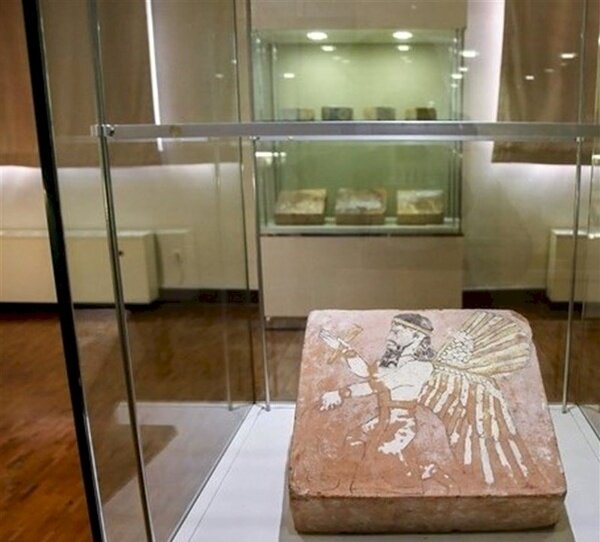2,700-year-old bricks to go on show at home

TEHRAN – A collection of recovered Mannaean bricks will go on show in the city of Bukan, western Iran, where they were originally unearthed by archaeologists in the 1970s.
“The 2700-year-old bricks are arranged to be transferred from the National Museum of Iran to a museum in Bukan for a one-month exhibition,” the tourism chief of West Azarbaijan said on Sunday.
The collection is composed of 51 bricks bearing images of various sphinxes, animals, and other motifs.
Excavated from Tepe Qalaichi, a Mannaean settlement in Bukan, the bricks were looted and smuggled out of Iran some four decades ago, Jalil Jabbari said.
Qalaichi's archaeological site was once part of the Mannaean capital.
“Tepe Qalaichi embraces a Mannaean cultural layer which has yielded several architectural structures so far.”
One of the buildings is located in the center of the hill and has several rooms, each bearing drawings of geometric patterns, humans, and plantations, the official said.
The decorated bricks were returned home from Switzerland last year. According to The Art Newspaper, the artworks were recovered from a warehouse in Switzerland.
In the 1970s, a farmer plowing at Qalaichi came across a decorated brick, probably from the columned hall of its citadel. This discovery led to extremely damaging illegal excavations, partly using a bulldozer.
Eventually, in 1985, there was an official rescue excavation, but this was quickly abandoned because of an intensification of the Iran-Iraq war. There were then 14 more years of illegal digging until 1999 when there was another official excavation. But by this time only small fragments of broken bricks were found.
Mannai civilization flourished in northwestern Iran in the 1st millennium BC. Mannai, also spelled Manna, was an ancient country surrounded by three major powers of the time namely Assyria, Urartu, and Media.
According to the Encyclopedia Britannica, the Mannaeans are first recorded in the annals of the Assyrian king Shalmaneser III (reigned 858–824 BC) and are last mentioned in Urartu by Rusa II (reigned 685–645 BC) and in Assyria by Esarhaddon (reigned 680–669 BC). With the intrusion of the Scythians and the rise of the Medes in the 7th century, the Manneans lost their identity and were subsumed under the term Medes.
AFM
Leave a Comment